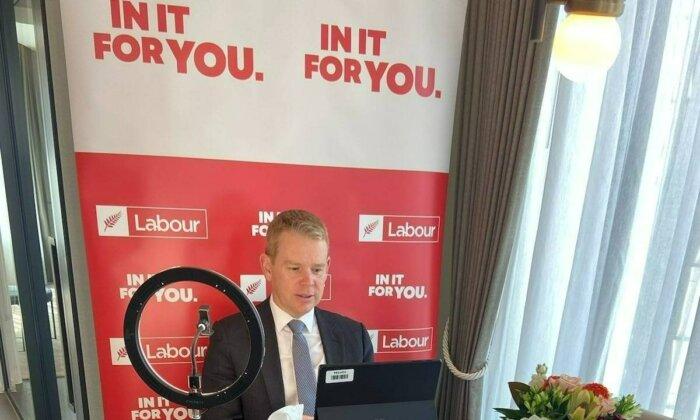New Zealand Prime Minister Chris Hipkins remains in isolation after testing positive for COVID-19.
The Labour leader fell sick from the virus on the weekend, just two weeks out from the election.
A Facebook post of Mr. Hipkins sitting at his desk with a box of tissues appeared on Tuesday afternoon.
“Still in iso. Still in it for you,” he said.
“My team are brutally honest ... apparently I was looking pretty sick and so they gave me this ring light—it definitely helped!”
New Zealand no longer requires COVID-19 or testing, however, Mr Hipkins chose to isolate.
Mr. Hipkins took over from Jacinda Ardern as prime minister in January this year. Ms. Ardern served as New Zealand Prime Minister from Oct. 26, 2017, to Jan. 25, 2o23.
New Zealand closed its borders to the rest of the world for more than two years from March 2020 to August 2022 to keep out COVID-19.
The current Labour leader will remain in isolation for five days in an Auckland hotel.
“I’ve taken a lot of drugs to do this interview,” he said during a Monday night interview.
National Opposition Leading in the Polls
National leader Christopher Luxon is taking on Mr. Hipkins in the race to win the New Zealand election in less than two weeks time.A 1News-Verian poll showed 36 percent of New Zealanders support the Nationals, 26 percent for Labour, 13 percent Greens, 12 percent ACT, and 6 percent for NZ First.
Early voting started on Monday and the election will be held on Saturday, Oct. 14.
Mr. Luxon is open to calling New Zealand First, led by Winston Peters, for support after the election results come in, but that is not his preference.
The National Party released its health policy on Oct. 3, saying New Zealand’s health system is “in crisis” with rising wait lists and emergency department wait times.
If elected, the Nationals are promising to increase health funding every year and shift resources from the back office to the front line.
“We will increase funding for cancer medicines, so New Zealanders have access to more of the treatments available in Australia. And we will address the health workforce crisis by training, retaining and attracting more doctors, nurses, and midwives.”








